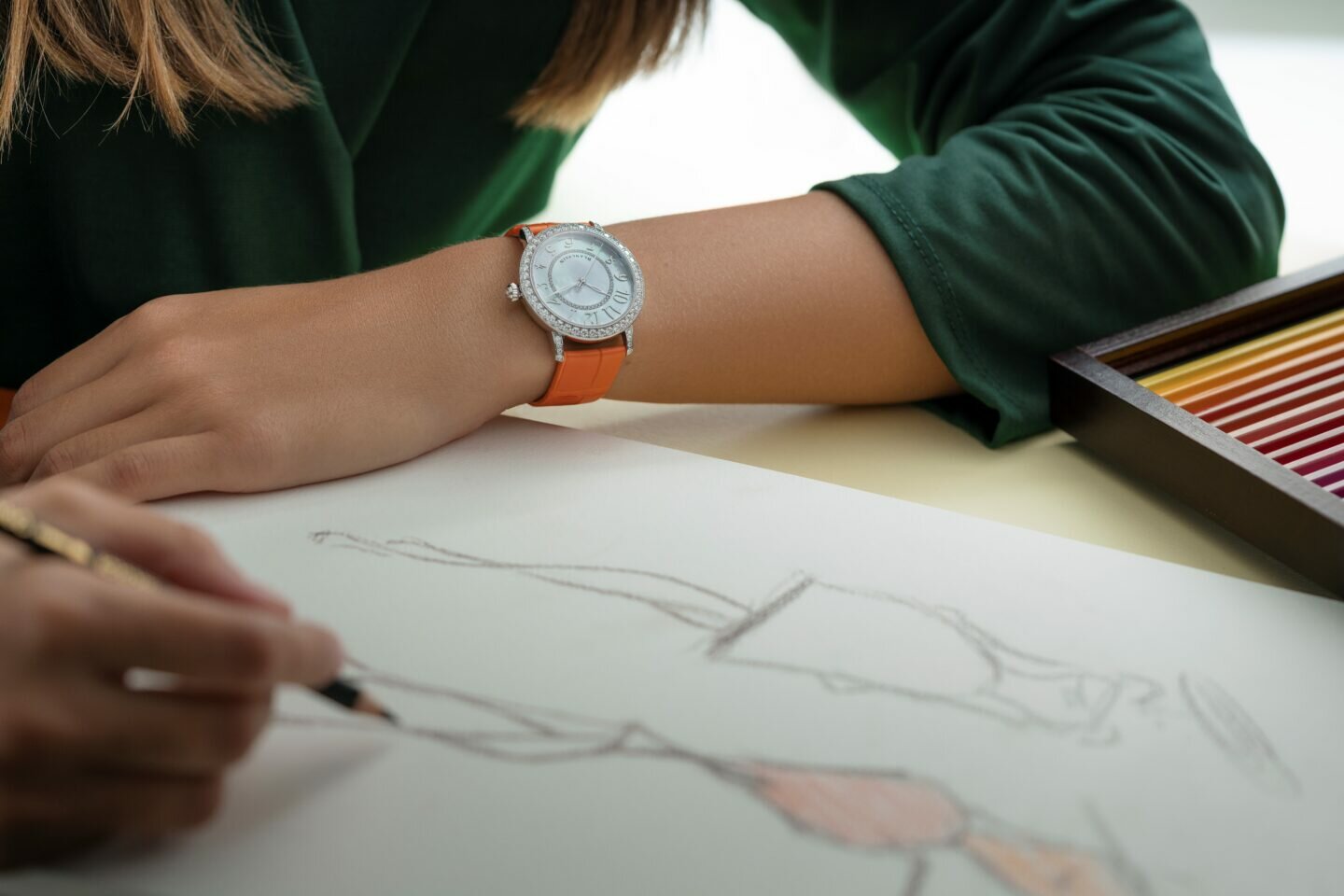A front runner in the realm of ladies’ mechanical watches, Blancpain made history in the 1930s when it unveiled the world’s first self-winding ladies watch, Rolls. Some 20 years later, in 1956, it created Ladybird, a diminutive and ultra-feminine mechanically powered ticker that was the world’s smallest round watch at that time. Since then, Ladybird has grown into a full collection of watches designed to evolve with the changing times; what remains constant is its petite dimensions which hardly deviated from the original watch.
That is, until this year.
Blancpain introduces Ladybird Colors, an entirely new take on its namesake predecessor. In fact, “Ladybird” will be the name for all of its future feminine creations, birthing a new collection of ladies watches that may be varied in design but always faithfully reflecting Blancpain’s timeless values.
The new Ladybird Colors, offered in a 34.9mm red or white gold case, features a white mother-of-pearl dial adorned with slightly rounded and variedly sized applied gold Arabic numerals that form an asymmetrical hour circle crowned by the number 12. An inner circle of diamonds lights up the dial while the hours and minutes are pointed out by a pair of hands shaped like hollowed-out sage leaves – a signature Blancpain attribute.
A dazzling piece that is adorned with more than 2 cts of diamonds, including a sparkling rose-cut diamond fitted on the dial, each watch has been painstakingly handcrafted with the highest gem-setting standards in mind.
Each Ladybird Color is the product of hundreds of hours of craftsmanship, with a considerable amount of time dedicated to the art of gem-setting. Before the diamonds are set, gemsetters hollow out the gold using a tool called a scorper to create a thin clean-cut band of precious metal (fillet) on either side of the diamonds. This process, otherwise known as recutting, creates a mirror effect and maximises the brilliance of the diamonds. After the diamonds are precisely aligned, the gemsetters use gravers to lift and push the metal over the edge of the stone before using a beading tool to round and smooth the grains of gold that hold the gemstones.
This utmost attention to detail and finishing is also applied to its movement, the in-house manufactured Calibre 1150, renowned for its slenderness and its generous four-day power reserve, as well as its silicon balance spring. It combines a circular-grained mainplate with chamfered, satin-brushed bridges adorned with a Côtes de Genève motif. The self-winding movement is equipped with an openworked gold oscillating weight that has been designed to match the circular patterns on the dial.
Available in seven colourful case and strap combinations to suit the different tastes and wants of today’s multi-facetted woman, the red gold model is available with a choice of peacock green, midnight blue or satin-white alligator leather strap, while the white gold version can be paired with a lemon yellow, tangerine orange, lilac or satin-white alligator leather strap. Each strap is fitted with a gold pin buckle or folding clasp set with nine diamonds.



